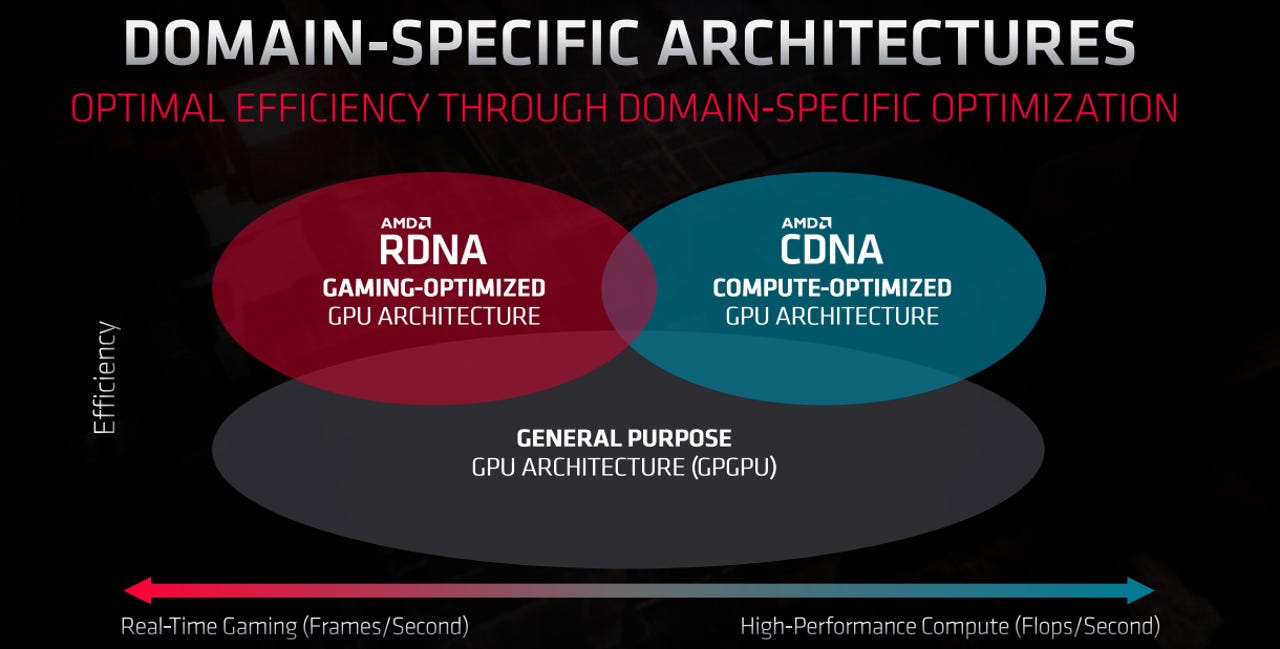AMD unveils new GPU architecture for data center compute workloads


AMD on Thursday unveiled a new GPU architecture designed expressly to optimize data center compute workloads. The new AMD Compute DNA (AMD CDNA) architecture was announced during AMD's Financial Analyst Day, during which the chipmaker shared its multi-generational CPU and GPU roadmaps for growth.
"Our multi-generational computing and graphics roadmaps are designed to significantly accelerate revenue growth and deliver strong shareholder returns," President and CEO Lisa Su said in a statement.
The company is aiming a 20 percent CAGR, accelerating the pace of growth above the 14 percent CAGR it achieved over the past five years. Most of that growth will come from the data center, which accounted for 15 percent of AMD's revenues in 2019. Its long-term plan is to increase that share to 30 percent.
To address data center needs, AMD plans to launch the AMD CDNA architecture later this year. It includes second-gen AMD Infinity Architecture to enhance GPU to GPU connectivity and is optimized for machine learning and high-performance computing applications. After that, AMD will launch the CDNA 2 architecture, which will support third-gen Infinity Architecture to enable exascale-class supercomputers.
The new GPU architecture is a departure from the Radeon DNA (AMD RDNA) architecture, which was designed for gaming.
"This is a good move as datacenter GPUs don't need many of the features a consumer graphics card needs," tech analyst Patrick Moorhead said in a statement to ZDNet. "This includes elements like display and pixel rendering engines, and ray tracing. This means AMD can save cost by removing those elements and add more gates that help datacenter performance like tensor OPS. AMD hadn't done it until today because it couldn't afford to have two architectures. I believe AMD can field a high performance datacenter GPU, but it will need to invest at least as much in software to complete the solution."
AMD also said it plans to build on previous generations of its ROCm open source software platform for the data center, with the introduction of ROCm 4.0 later this year.
AMD re-entered the data center market in 2017 with its Epyc server processors. The second-gen Epyc processors continue to gain traction in the enterprise, cloud and high-performance computing (HPC) markets, AMD said Thursday. In 2020, the company expects more than 150 Epyc processor-powered cloud instances and 140 server platforms to be available.
According to AMD's Forrest Norrod, the company is on track to achieve double-digit data center market share by the second quarter of 2020.
Meanwhile, the company says it is well positioned to drive sustained growth in the PC and gaming markets as well, with its Ryzen processors, Radeon graphics and semi-custom products.
Since 2017, AMD has nearly doubled both client unit shipments and market share. It plans to deliver the first Zen 3-based Ryzen processors in late 2020. The Zen 4 core is currently in design and is targeted to use 5nm process technology.
Additionally, products based on the next-generation Radeon DNA 2 architecture are expected to launch in late 2020.